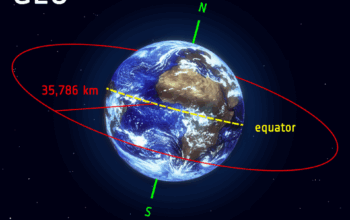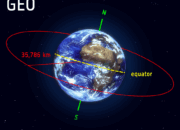The dynamo effect, a cornerstone of electromagnetism, elucidates the mechanisms through which magnetic fields can be generated and sustained within conductive fluids, capturing the interest of astrophysicists when applied to the enigmatic phenomena surrounding black holes. Black holes, often portrayed as insatiable voids of nothingness, are replete with intricate dynamics, wherein the dynamo effect emerges as a compelling mechanism that facilitates the transfer of energy from the event horizon and surrounding accretion disks into the universe. This interplay underscores a captivating narrative regarding the fundamental properties of black holes and their interactions with the cosmic tapestry.
To understand the dynamo effect in the context of black holes, one must first grasp the essence of magnetic fields generated by moving conducting fluids. The principle, initially conceived to explain geophysical phenomena such as the Earth’s magnetosphere, posits that as an electrically conductive medium moves through a magnetic field, or conversely, as a magnetic field moves through such a medium, electric currents are induced, creating new magnetic fields. This picture paints a remarkable scenario when transposed to the fiery milieu surrounding a rotating black hole—specifically, in the context of frame-dragging and relativistic effects.
In the framework established by general relativity, black holes possess not only mass but also spin—a phenomenon well established by the Kerr solution to Einstein’s equations. This spin generates an effect termed “frame-dragging,” where space-time itself is twisted around the rotating mass. Within the accretion disk, stellar material spirals towards the event horizon, becoming ionized and thus conductive. The intermingling of relativistic velocities with electromagnetic fields outlines a fertile ground for the emergence of a sizeable and persistent magnetic field through dynamo action. This effect contributes to the dynamic interplay between gravitational forces and electromagnetic interactions, leading to an enhanced understanding of energy extraction mechanisms in extreme astrophysical environments.
The further dimensions of this process hinge upon the phenomenon of magnetic reconnection—an event where opposing magnetic field lines merge and reconfigure, ultimately releasing energy. Key astrophysical data indicates that magnetic reconnection events can facilitate outflows of energy from the accretion disk surrounding a black hole. These outflows foster high-energy particles, capable of escaping the vicissitudes of intense gravitational pulls. Consequently, the intersection of the dynamo effect and magnetic reconnection illuminates pathways through which black holes exert influence beyond their event horizons, presenting a paradigm shift in our comprehension of energy dynamics in astrophysical settings.
It is imperative to note that this dynamo effect and associated processes are not limited to rotating black holes but extend to other astrophysical phenomena, such as neutron stars and magnetars, where similar metallic and conductive plasma dynamics occur. However, the black hole scenario remains uniquely captivating, primarily due to these enigmatic entities’ abilities to generate adroitly orchestrated astrophysical jets—narrow, high-velocity streams of particles expelled from the vicinity of a black hole. These jets, observed in various galaxies, underscore the dynamo’s paramount role in converting gravitational energy into electromagnetic energy.
As we venture deeper into the implications of the dynamo effect, the role of turbulence within the accretion disk becomes manifest. Stellar material colliding and interacting at relativistic speeds induces complex fluid dynamics. These turbulent motions are instrumental in sustaining and amplifying magnetic fields. The resulting amplification can lead to amplification rates that far exceed those seen in more quiescent astrophysical environments, thus reinforcing the black hole’s magnetic field, and establishing a feedback loop that perpetuates the dynamo action.
The fascination surrounding the dynamo effect and its association with black holes enriches the dialogue on cosmological models and the very fabric of our universe. The prospect that black holes are not merely destructive entities, but rather powerful engines converting gravitational energy into magnetic energy, fundamentally alters the narrative surrounding these celestial giants. This conceptual paradigm also invites inquiry into the broader ramifications of black holes as key catalysts in cosmic evolution—impacting star formation, galactic structure, and energy distribution across the cosmos.
As researchers probe the depths of these phenomena, the dynamo effect emerges not merely as a mechanism but as a profound metaphor for the interconnectivity of gravitational and electromagnetic forces. It exemplifies a universe where dissonance births creativity, where the destructive forces of a black hole serve as conduits of energy production. These aspects lead to profound contemplations on the nature of energy in the cosmos, urging scientists to examine the fundamental underpinnings of matter, energy, and the very laws that govern the cosmological framework.
Astrophysical models leveraging the dynamo effect may pave the way for advancements in our understanding of fundamental physics, magnetic fields, and collective behaviors of plasma under extreme conditions. As our observational capabilities evolve, bridging gaps between theoretical predictions and empirical evidence bears the promise to unravel the intricate dance of forces at play in the universe. This relationship between the dynamo effect and black holes serves as a testament to the symbiotic relationship between gravitational phenomena and electromagnetism—a notion that continues to captivate and challenge contemporary astrophysical research.












